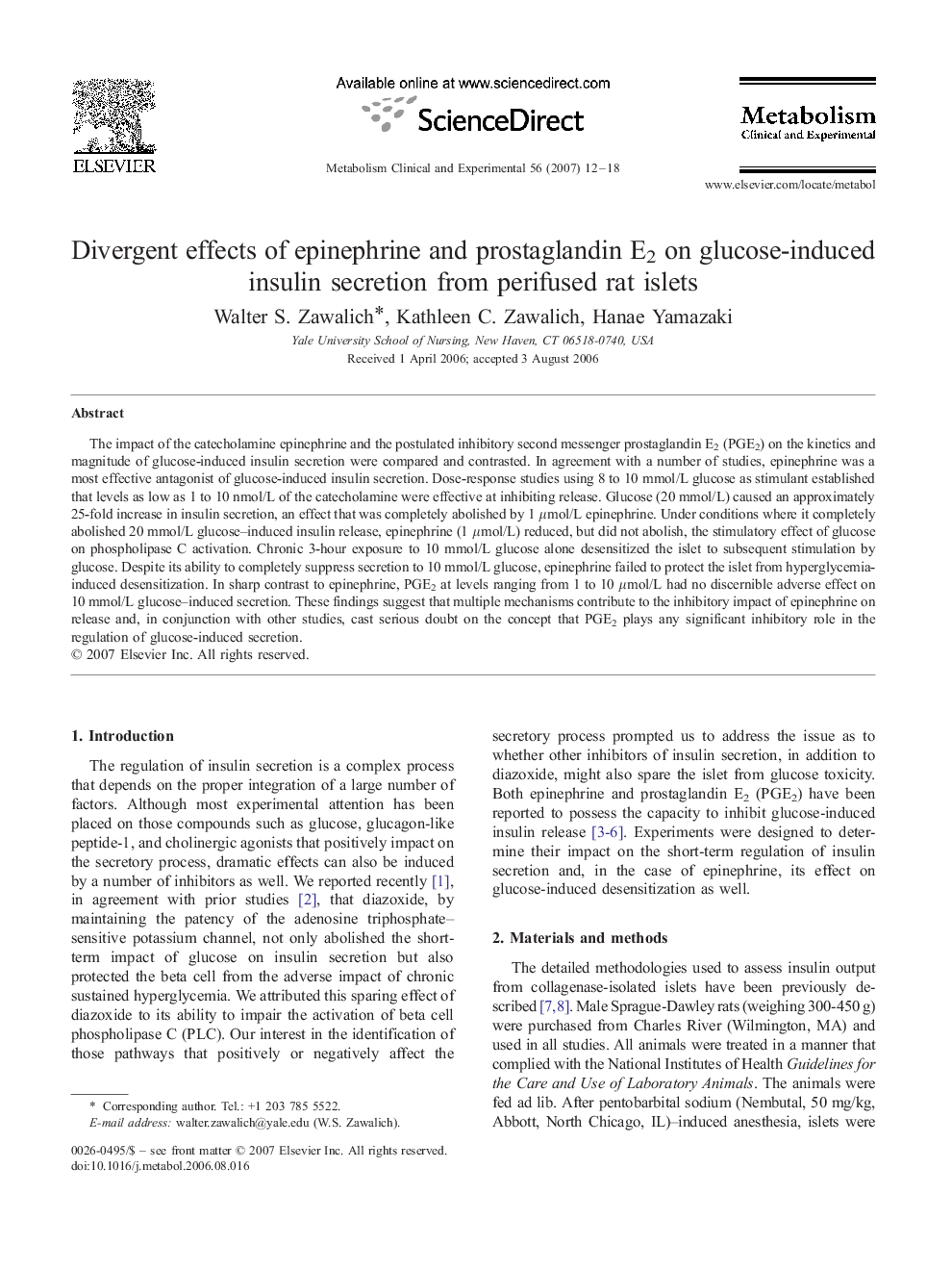| Article ID | Journal | Published Year | Pages | File Type |
|---|---|---|---|---|
| 2807552 | Metabolism | 2007 | 7 Pages |
The impact of the catecholamine epinephrine and the postulated inhibitory second messenger prostaglandin E2 (PGE2) on the kinetics and magnitude of glucose-induced insulin secretion were compared and contrasted. In agreement with a number of studies, epinephrine was a most effective antagonist of glucose-induced insulin secretion. Dose-response studies using 8 to 10 mmol/L glucose as stimulant established that levels as low as 1 to 10 nmol/L of the catecholamine were effective at inhibiting release. Glucose (20 mmol/L) caused an approximately 25-fold increase in insulin secretion, an effect that was completely abolished by 1 μmol/L epinephrine. Under conditions where it completely abolished 20 mmol/L glucose–induced insulin release, epinephrine (1 μmol/L) reduced, but did not abolish, the stimulatory effect of glucose on phospholipase C activation. Chronic 3-hour exposure to 10 mmol/L glucose alone desensitized the islet to subsequent stimulation by glucose. Despite its ability to completely suppress secretion to 10 mmol/L glucose, epinephrine failed to protect the islet from hyperglycemia-induced desensitization. In sharp contrast to epinephrine, PGE2 at levels ranging from 1 to 10 μmol/L had no discernible adverse effect on 10 mmol/L glucose–induced secretion. These findings suggest that multiple mechanisms contribute to the inhibitory impact of epinephrine on release and, in conjunction with other studies, cast serious doubt on the concept that PGE2 plays any significant inhibitory role in the regulation of glucose-induced secretion.
